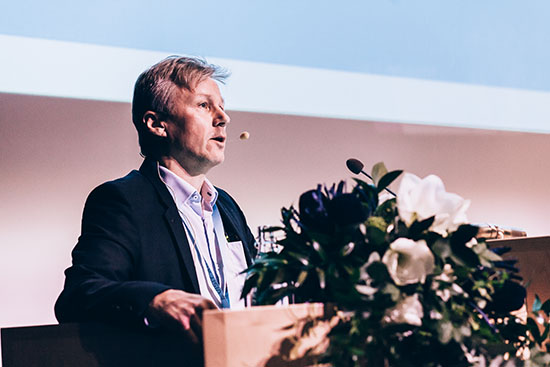Tourists come to the Arctic region to see the Northern Lights and to experience the pure, quiet wilderness. How can we combine tourism and nature in the north in a sustainable way?
Rauno Posio has a long experience in Arctic tourism. He is one of the speakers in a seminar called Sustainability is Cool in Arctic Tourism at the Hokkaido University in Sapporo, Japan on 28 June. The Ministry of Economic Affairs and Employment of Finland organises the event together with Hokkaido University, Hokkaido Government, Hokkaido Committee for Economic Development, Team Finland, Business Finland, Visit Finland and Embassy of Finland in Tokyo.
“The problem is how to combine the pristine nature with tourism flows. The north will not and should not become a mass tourism destination. Instead, we need to provide high-quality services with prices that help us avoid overpopulating our tourist attractions.”
In Finnish Lapland, the visitors gather at the airport, in the hotels and by the attractions, but there is still plenty of space for everyone. Even at peak season, tourists can walk for hours in the woods without meeting others. The service providers work on combining the wonders of the nature with modern comforts.
“Even if the foreign travellers say that they look for wilderness and solitude, they still want their hairdryers, modern quality restaurants and company for dinner”, Rauno Posio notes.
“Those who want exclusive services and tranquillity are just a small minority. Most visitors want just a touch of wilderness.”
The situation in Finnish Lapland is special, because the tourism service infrastructure is developed, yet the nature is near. In Rovaniemi for example, the city provides urban services, but if you drive for just five minutes, you are deep in nature. The skiing paths and hiking routes on Ounasvaara represent true wilderness for most tourists.
“I think this is an important point for sustainability. We need to construct services in areas where it is appropriate. This way we can preserve the nature. When waste management and recycling are organised along the tourist routes, we will not strain the environment too much. If we do not prepare the routes and services, the tourists will consume and destroy more of our nature”, Rauno Posio advises.
One of the themes of the Hokkaido seminar is indigenous tourism. Rauno Posio maintains that tourism is an industry that can benefit the indigenous peoples, not endanger their traditional lifestyles.
“I believe that the indigenous groups could use their own tradition and history to develop services for visitors in a way that communicates their pride in their roots. This would improve not only their financial but also social wellbeing. But the indigenous peoples must decide and plan these services for themselves”, Rauno Posio says.

The seasoned tourism industry professional has just concluded Visit Arctic Europe, an Interreg Nord project set up by the Finnish Lapland Tourist Board, Northern Norway Tourist Board and Swedish Lapland Visitors Board. They worked on developing Northern Scandinavia into an internationally competitive tourist area reaching across national borders. The project focused on tourism marketing and on developing travel packages for international visitors.
“The most important result of our project was to build trust and develop cooperation in the region. Now both regional organisations and private companies have realised the power of cross-border cooperation. We cannot and will not go back to competing with each other”, the project leader announces proudly.
Accessibility was one of the main objectives.
“We constructed business case toolkits for 18 airports in the north to help them start creating direct flight connections and to contact airlines and travel organisers abroad. Finavia in Finland and the tourism organisations welcomed our toolkits. They are cooperating closely to update the toolkit materials yearly and they work together to make flight companies and tour operators to open new flight routes to the north. Improved accessibility will have a strong impact in the future.”
“We have cooperation agreements with 12 tour operators, who have made new travel packages for the area and brought new travellers to service providers. The commercial results - 38 million euros between November 2016 and October 2017 alone, and over 400 new jobs - were a positive surprise. Some 90 companies participated in the first project; now 121 companies want to participate in the second round”, Rauno Posio explains.
In August, the project will move into a new phase to improve year-round tourism in the area. The focus will be on product development and marketing during low seasons, where there is the biggest potential for further development. Travel routes need continuing work to take the tourists better into account. There is need for a digital platform where foreign tourists could find information on schedules and prices and buy tickets.
“Many travellers would like to combine wilderness in Finnish and Swedish Lapland with the seaside views of the Norwegian coast. We hope to improve cross-border transportation – bus lines and the like. With cooperation between the tourism industry, transport providers and the public sector, we hope to get the tourists to stay longer in our region.”
Rauno Posio is excited about the opportunity to meet Japanese tourism industry professionals.
“It is a real pleasure to be part of this seminar. This is my first time in Japan. The Japanese were the first major group to discover the Northern Lights in Lapland. Now I get the opportunity to visit their country.”